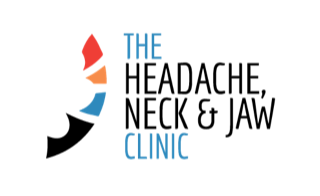Our team at the HNJ clinic are starting to hear some common themes from our patients about what it is like working from home. We are hearing it is more productive thanks to less travel time and less interruptions during the day from colleagues and co-workers. However, we have also had some shocking set ups described to us that would make the poor Occupational Health and Safety manager apply for stress leave.
Move before you’re sore!

The key message about optimising your productivity while minimising your aches and pain is to change position before you start to feel it. Less interruptions means you are less likely to change position. Less travel means less walking and more sitting. Even an optimal ergonomic setup requires increased awareness and strength to be able to hold your body in the ideal position for longer periods of working time. Once your muscles are fatigued, you can no longer make a decision to sit up straight and your bodies only option is to slouch. Moving from chair to stool to standing to couch throughout the day before you feel sore changes which muscles you are using and gives any fatigued muscles a chance to recover. If you wait until you feel that ache in your neck before you move, its too late, the horse has bolted.
Consuming vs Creating
Everyone has different ergonomic needs for different tasks. I think about relating my posture and workstation as to whether I am consuming or creating.
If you are creating data, such as spreadsheeting, report writing or designing, you need to have the classic set up of 90 degree knees and elbows with an external mouse and keyboard. Creating is time consuming and is probably the bigger part of your working role. Being productive when creating requires concentration and you are less likely to be thinking about your posture or how long you have been in that posture, so it needs to be ideal.
If you are consuming data, such as checking emails, reading reports or researching websites, you have more scope to be in a more relaxed set up. Consuming data normally is a smaller part of most roles and doesn’t take up big chunks of time during the day. Allocate your designated home office workspace to do all you creative work but make a point of leaving this office semi-regularly throughout the day to consume information. It is easy to spend 20 minutes checking your emails on a stool at the kitchen island or on your outdoor setting before moving back into your designated home office. If you need to read a report, change rooms and sit on a Swiss ball at your kitchen table for 30 minutes. Create a stir and sit in an armchair for a Zoom meeting. At the very least, stand up to make phone calls or if you can walk to the local coffee shop and back while talking that will be better again.
Make sure you actually take breaks. Do not eat your lunch at your desk.

Spend 10 minutes everyday watering your garden. Make sure you talk to at least 1 other human being a day.
Ideal posture means aligning your spine and limbs the closest to neutral you can with the minimal amount of muscle activation. Neutral posture requires strength in your core muscles to sit up straight and endurance to hold it, so simply deciding to sit up straight suddenly as a response to a workplace change won’t be sustainable because you literally won’t have the strength or mobility to maintain good posture with minimal muscle effort.
We hope that these tips help to maintain a pain-free home workplace during this COVID-19 pandemic.

